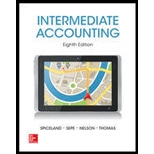
Concept explainers
(1)
The accounts receivable turnover ratio determines the efficiency of a company to use its assets and issue the credit to the customers and collects the funds from them. The accounts receivable turnover is determined by dividing the credit sales by the average accounts receivable of that accounting period.
Average Collection Period:
The average collection period refers to the average number of days which a company takes to collect the accounts receivable. The average collection period is determined by dividing the number of days in a year by the accounts receivable turnover.
To calculate: The receivables turnover ratio and average collection period of 2013 for both companies, also evaluate the management of each company’s investment in receivables.
(2)
To Obtain: Annual reports from the three corporation in the same primary industry and compare the management of each company’s investment in receivables.
Want to see the full answer?
Check out a sample textbook solution
Chapter 7 Solutions
INTERMEDIATE ACCOUNTING
- Fill in the attached balance sheet with the data provided on the SEC for years 2020, 2021 and 22 NIKE, INC BALANCE SHEET Financial Statements 2020 2021 2022 Assets Current Assets Cash and Cash Equivalents [insert value] [insert value] [insert value] Accounts Receivable Net [insert value] [insert value] [insert value] Inventory [insert value] [insert value] [insert value] Other Current Assets [insert value] [insert value] [insert value] Total Current Assets $ - $ - $ - Non-Current Assets Property, Plant and Equipment Net [insert value] [insert value] [insert value] Intangibles [insert value] [insert value] [insert value] Other Assets [insert value] [insert value] [insert value] Total Non-Current/Fixed Assets $ - $…arrow_forwardWhat is the effect of a debit to an expense account?A. Decreases expensesB. Increases equityC. Increases expensesD. Decreases assets helparrow_forwardNo chatgpt What is the effect of a debit to an expense account?A. Decreases expensesB. Increases equityC. Increases expensesD. Decreases assetsarrow_forward
- What is the effect of a debit to an expense account?A. Decreases expensesB. Increases equityC. Increases expensesD. Decreases assetsneed helparrow_forwardWhat is the effect of a debit to an expense account?A. Decreases expensesB. Increases equityC. Increases expensesD. Decreases assetsarrow_forwardNo AI 4. If total debits exceed total credits on a trial balance, the difference is most likely:A. A net lossB. A recording errorC. A net incomeD. An overstatement of assetsarrow_forward
- Need help ! 4. If total debits exceed total credits on a trial balance, the difference is most likely:A. A net lossB. A recording errorC. A net incomeD. An overstatement of assetsarrow_forward4. If total debits exceed total credits on a trial balance, the difference is most likely:A. A net lossB. A recording errorC. A net incomeD. An overstatement of assetsarrow_forwardCalculate the times-interest-earned ratios for PEPSI CO, Given the following informationarrow_forward
- Calculate the times-interest-earned ratios for Coca Cola in 2020. Explain if the times-interest-earned ratios is adequate? Is the times-interest-earned ratio greater than or less than 2.5? What does that mean for the companies' income? Can the company afford the interest expense on a new loan?arrow_forwardWhich of the following is a temporary account?A. EquipmentB. Accounts PayableC. Utilities ExpenseD. Common Stockarrow_forwardUnearned revenue becomes revenue when:A. A sale is madeB. Cash is receivedC. The service is performedD. The revenue is recordedarrow_forward

 AccountingAccountingISBN:9781337272094Author:WARREN, Carl S., Reeve, James M., Duchac, Jonathan E.Publisher:Cengage Learning,
AccountingAccountingISBN:9781337272094Author:WARREN, Carl S., Reeve, James M., Duchac, Jonathan E.Publisher:Cengage Learning, Accounting Information SystemsAccountingISBN:9781337619202Author:Hall, James A.Publisher:Cengage Learning,
Accounting Information SystemsAccountingISBN:9781337619202Author:Hall, James A.Publisher:Cengage Learning, Horngren's Cost Accounting: A Managerial Emphasis...AccountingISBN:9780134475585Author:Srikant M. Datar, Madhav V. RajanPublisher:PEARSON
Horngren's Cost Accounting: A Managerial Emphasis...AccountingISBN:9780134475585Author:Srikant M. Datar, Madhav V. RajanPublisher:PEARSON Intermediate AccountingAccountingISBN:9781259722660Author:J. David Spiceland, Mark W. Nelson, Wayne M ThomasPublisher:McGraw-Hill Education
Intermediate AccountingAccountingISBN:9781259722660Author:J. David Spiceland, Mark W. Nelson, Wayne M ThomasPublisher:McGraw-Hill Education Financial and Managerial AccountingAccountingISBN:9781259726705Author:John J Wild, Ken W. Shaw, Barbara Chiappetta Fundamental Accounting PrinciplesPublisher:McGraw-Hill Education
Financial and Managerial AccountingAccountingISBN:9781259726705Author:John J Wild, Ken W. Shaw, Barbara Chiappetta Fundamental Accounting PrinciplesPublisher:McGraw-Hill Education





